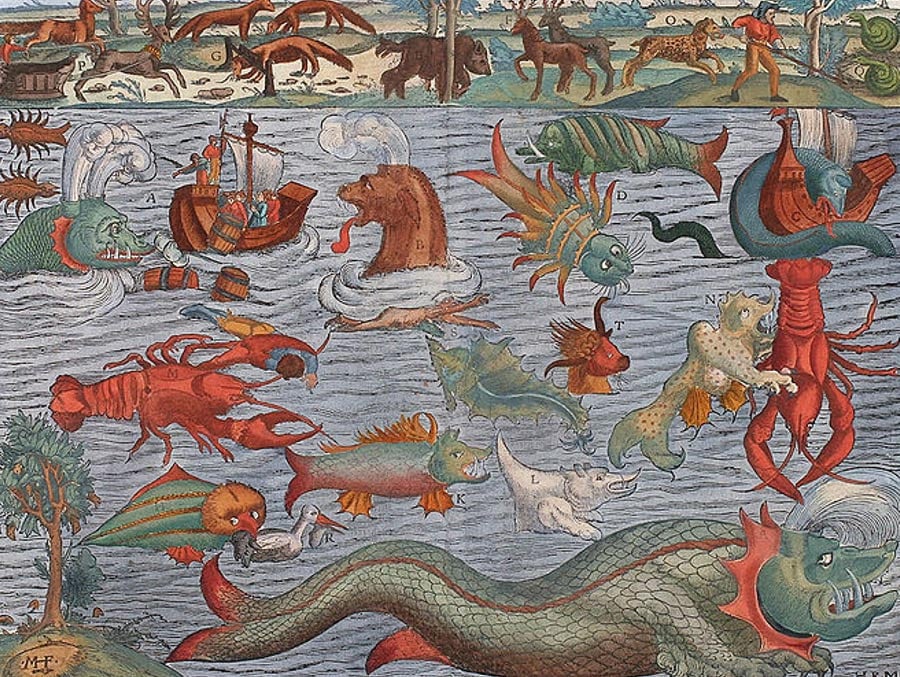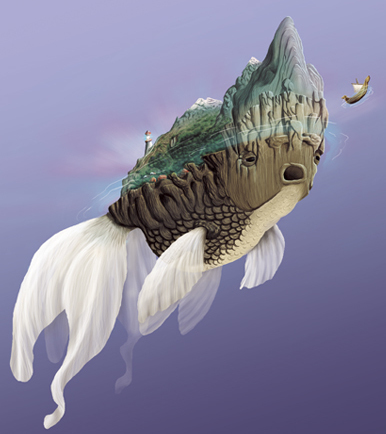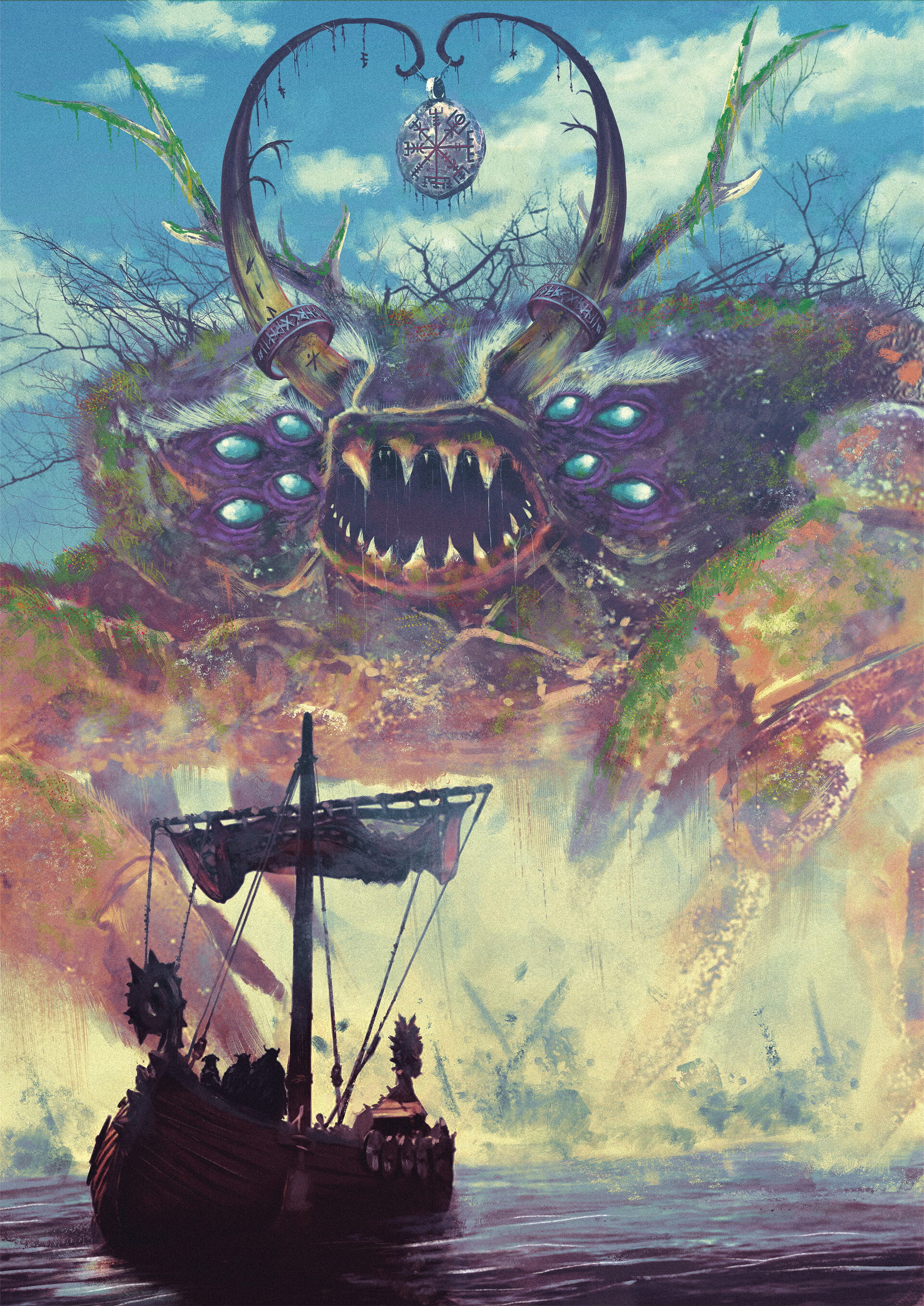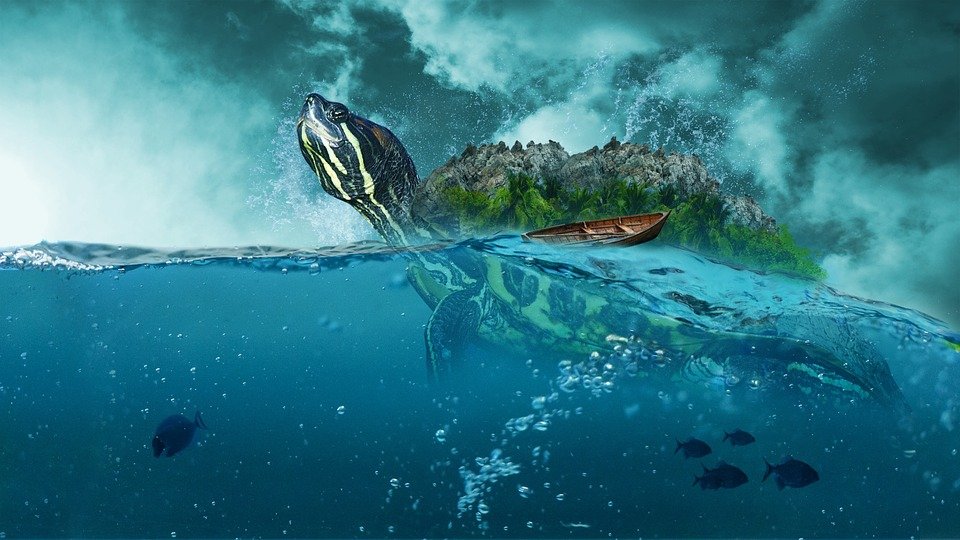A Whale of an Island (original) (raw)

There are many tales of gigantic sea monsters, perhaps because what’s under the sea is pretty mysterious, and some of what people see really IS pretty monstrous. Northern Europe has many such legends, and this is where people really did encounter giant squid. In this particular case, I’m writing about two monsters mentioned in the thirteenth century saga of Orvar-Oddr, the Hafgufa and the Lyngbakr. The former is an enormous whale-like creature, considered the mother of all sea monsters, and big enough to be mistaken for an island.
As such, there’s a similarity to the whale-back island from the tales of Sinbad, and to Jasconius, the whale (or giant fish; the people writing these legends weren’t generally zoologists) on which St. Brendan and his crew spent Easter. When the Hafgufa stuck its head out of the water, sailors mistook its nose for rocks. It fed by belching out a lot of food, then devouring the fish or anyone or anything else attracted by it. A Norwegian educational text from around 1250 posits that there are only two Hafgufa in the world, always seen in the same two places. And they’re infertile, so they don’t overwhelm the ocean. The name means “sea-mist” or “sea-steam,” presumably referring to its indistinct shape.
Picture by Marco Badanai
If you claim to have seen one, people will probably think you’re half-goofy. Lyngbakr is a whale-like animal covered with heather, the name literally meaning “heather-back.” It would sink back into the sea after a ship’s crew landed on its back.
Picture by Arngrimur Sigurdsson
The crew encountered both of these when sailing past Greenland. Odd’s son Vignir thinks the monsters were sent by the troll Ogmund, who had killed Odd’s blood-brother. Both of these monsters have been associated with the Kraken, which is elsewhere described as more like either a crab or a squid than a whale, but it’s not like anybody was really able to study these creatures in a lab or anything.
The monsters have also been compared to the Imap Umassoursa, a being mentioned in the folklore of the Inuit of Greenland, which also disguised itself as an island, and killed its prey by tipping over and spilling them into the sea. Shallow water near the ocean was often thought to be part of the Imap Umassoursa. And the Aspidochelone appears in medieval European bestiaries, usually considered an enormous sea turtle (hence the “chelone” part of its name), but sometimes also a whale or other sea creature. And yes, it also did the trick of disguising itself as an island.
This entry was posted in Animals, Art, Inuit, Monsters, Mythology, Native American, Norse, Poetry, Uncategorized and tagged aspidochelone, fish, giant squid, greenland, hafgufa, imap umassoursa, jasconius, kraken, lyngbakr, odd, ogmund, orvar-oddr, sea monsters, sinbad, squid, st. brendan, trolls, turtles, vignir, whales. Bookmark the permalink.
